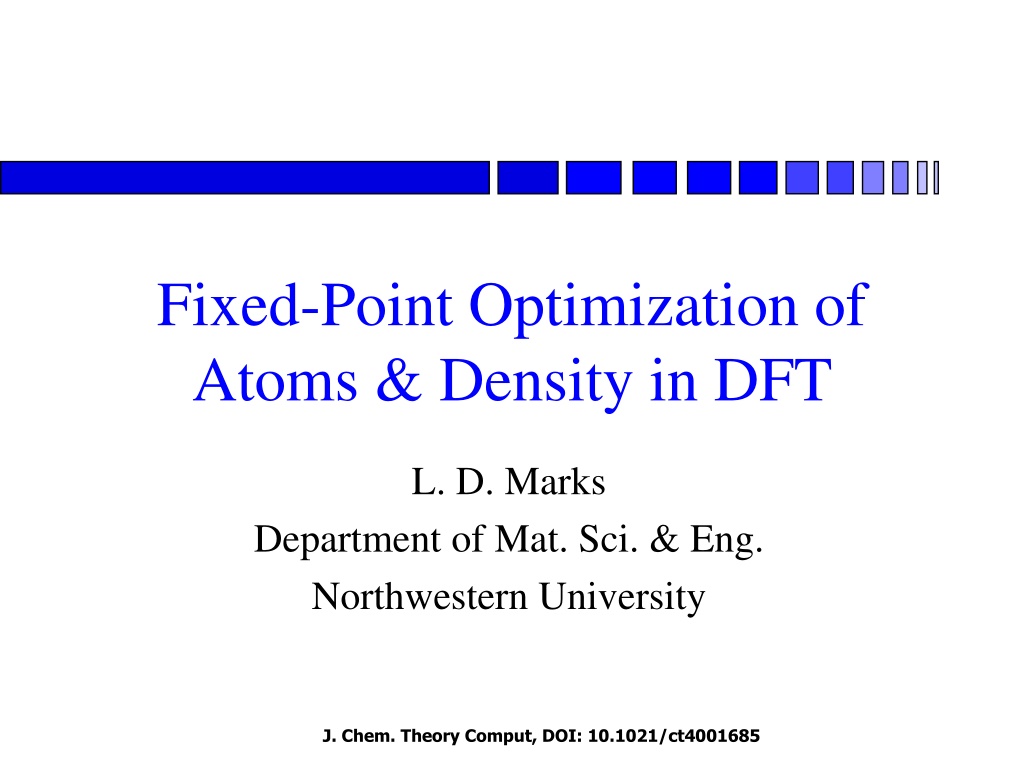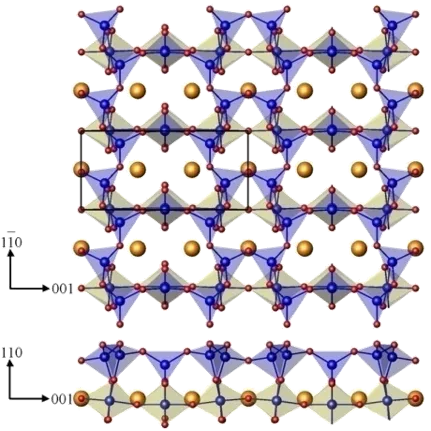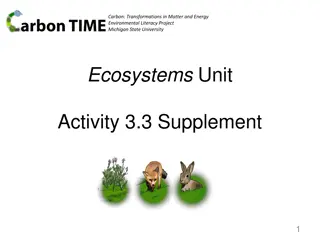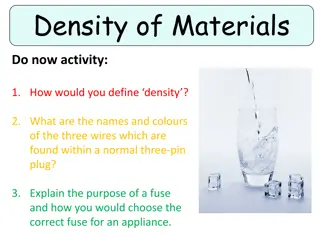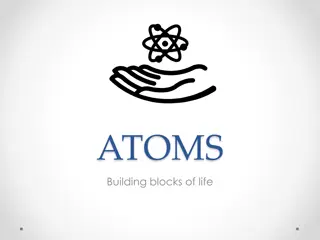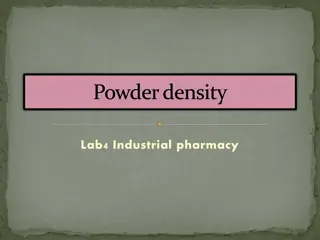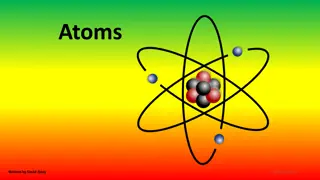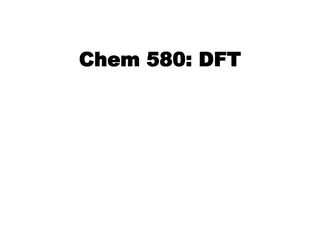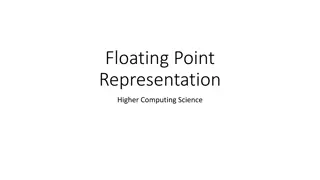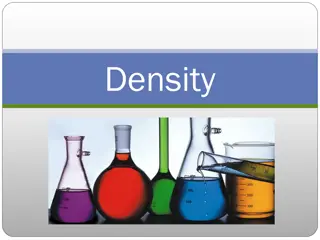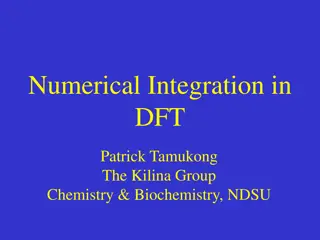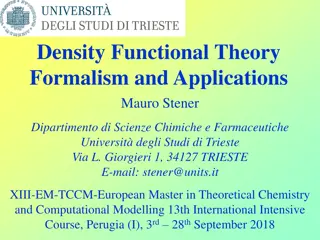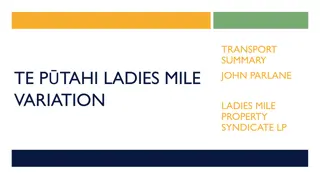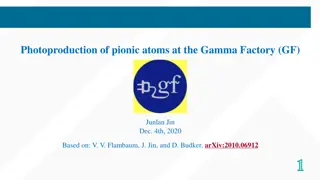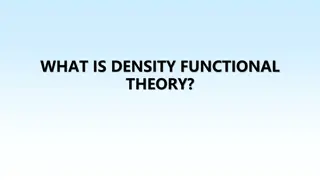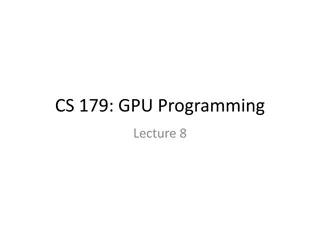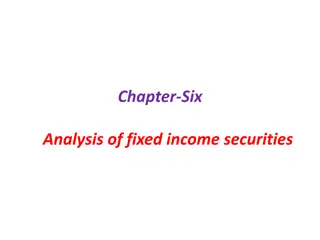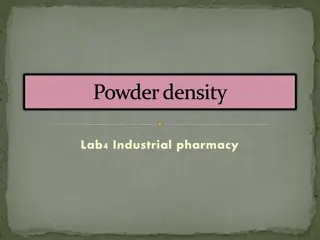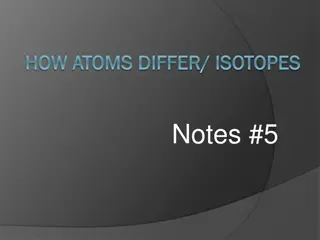Fixed-Point Optimization of Atoms & Density in DFT
A substantial part of computational work worldwide involves Density Functional Theory (DFT) calculations, emphasizing the need for robust algorithms. Explore the convergence challenges, SCF cycles, energy minimization techniques, and current optimization algorithms in DFT. Dive into the intricacies of fixed-point optimization for atomic positions and density, utilizing BFGS steps and Born-Oppenheimer surfaces.
Download Presentation

Please find below an Image/Link to download the presentation.
The content on the website is provided AS IS for your information and personal use only. It may not be sold, licensed, or shared on other websites without obtaining consent from the author. Download presentation by click this link. If you encounter any issues during the download, it is possible that the publisher has removed the file from their server.
E N D
Presentation Transcript
Fixed-Point Optimization of Atoms & Density in DFT L. D. Marks Department of Mat. Sci. & Eng. Northwestern University J. Chem. Theory Comput, DOI: 10.1021/ct4001685
Fundamentals A substantial fraction of the world computing is doing DFT calculations. IBM Blue Gene Increasingly large calculations are being done by experimentalists. Need robust, reliable, accurate and fast algorithms. Enterkin et. al., Nature Materials, 2010 J. Chem. Theory Comput, DOI: 10.1021/ct4001685
Converging many DFT codes The DFT literature (published, unpublished, listserver) is full of fudges and confusion about getting calculations to converge. Mixing factors Run calculations at 2000K (metals) J. Chem. Theory Comput, DOI: 10.1021/ct4001685
Self-consistent field (SCF) cycle Start with (r) Mix F( (r)) & (r) Calculate Veff (r) =f[ (r)] SCF cycle 2| ) r ( = r Compute ( )) | ( 1 F 2 + = i r r r Solve { ( )} ( ) ( ) V eff i i i 2 i E F J. Chem. Theory Comput, DOI: 10.1021/ct4001685
DFT Minimize Energy Atomic Positions Density Inner loop to obtain fixed- point for given atom positions Outer loop to optimize atomic positions Potential Solve eigenvectors values New Density Mix Density Forces Converged? No Yes Small No J. Chem. Theory Comput, DOI: 10.1021/ct4001685
Current algorithms (pure DFT) Calculate SCF mapping, time T0 Broyden expansion for fixed-point problem, self-consistent density, NSCFiterations BFGS is most common for optimizing the atomic positions (Energy), NBFGS Time scales as NSCF*NBFGS*T0 J. Chem. Theory Comput, DOI: 10.1021/ct4001685
Double-Loop Energy Contours Born- Oppenheimer Surface Fixed-Point for Density BFGS step J. Chem. Theory Comput, DOI: 10.1021/ct4001685
Convergence Classic QN convergence results*: NSCF scales as number of clusters of eigenvalues of the dielectric response, << number of variables NBFGS scales as the number of clusters of the force matrix (similar to phonons) *For instance: C.T. Kelly, Iterative Methods for Linear and Nonlinear Equations, SIAM, Philadelphia, 1995. J. Nocedal, S. Wright, Numerical Optimization, New York, 2006. J. Chem. Theory Comput, DOI: 10.1021/ct4001685
Why separate? Fused problem, number of clusters will be less than the product NSCF*NBFGS First proposed by Bendt & Zunger (1983), but they could not implement it. J. Chem. Theory Comput, DOI: 10.1021/ct4001685
Fused Loop Treat the density and atomic positions (as well as hybrid potentials etc as needed) all at the same time. No restrictions to special cases, general algorithm has to work for insulators, metals, semiconductors, surfaces, defects, hybrids . Few to no user adjustable parameters J. Chem. Theory Comput, DOI: 10.1021/ct4001685
Residual Contours Fused Loop Energy Contours Born- Oppenheimer Surface Zero-Force Surface J. Chem. Theory Comput, DOI: 10.1021/ct4001685
Broyden Fixed-Point Methods Solve ( (r,x)-F( (r,x)),G)=0 ??= (?,?)?+1 ?,??;??= ? ?,? ,??+1 ? ?,? ,?? Broyden s Good Method T k ( ) s H y s T k ( ) y B s s = + k k y k H H k k s k = + B B + 1 k k + T k 1 k k s T k s k k Broyden s Bad Method s H H 1 + = + T k ( ) H y y k k y k k k T k y k Generalizable to multisecant (better, S,Y matrices) C.G. Broyden, A Class of Methods for Solving Nonlinear Simultaneous Equations, Mathematics of Computation, 19 (1965) 577-593. J. Chem. Theory Comput, DOI: 10.1021/ct4001685
Multisecant Approach Consider a number of values: S = (s0,s1, .sn) ; Y=(y0,y1, .yn) Expand to a simultaneous solution: BS = Y ; or HY=S Minimum-Norm Solution + = 1 T k T k ( )( ) H H S H Y W Y W + 1 k k k k k k Take Hk=I
Reality Checkpoint In a linear model both Good and Bad methods have been shown to be superlinearly convergent, and by induction so will a linear combination*. Hence they should behave comparably. They don t, Good is unstable in DFT Hence the linear model is misleading *For instance: C.T. Kelly, Iterative Methods for Linear and Nonlinear Equations, SIAM, Philadelphia, 1995. J. Nocedal, S. Wright, Numerical Optimization, New York, 2006. J. Chem. Theory Comput, DOI: 10.1021/ct4001685
Phase Transitions: Jacobian can change discontinuously Electronic configuration of F( ) in the second step as a function of the size of the first Pratt step for an Fe atom, with the 4s occupancy within the muffin-tins in black (x10) and the 3d in red Other examples 3 2.5 NiSurf rhBN 2 Fe Atom MgO 1.5 1 0.5 0 0 0.05 0.1 0.15 0.2 0.25 0.3 0.35 0.4 J. Chem. Theory Comput, DOI: 10.1021/ct4001685
Algorithm Greed A greedy algorithmalways makes the choice that looks best at the moment. That is, it makes a locally optimal choice in the hope that this choice will lead to a globally optimal solution. 1 Good Broyden is the optimal greedy algorithm. Hence if the linear model is valid it is best. Bad Broyden is the least greedy algorithm, optimal if the linear model is not valid. 1T.H. Cormen, C.E. Leiserson, R.L. Rivest, C. Stein, Introduction to Algorithms, MIT Press, Boston, US, 2009. J. Chem. Theory Comput, DOI: 10.1021/ct4001685
What is a greedy algorithm? A greedy algorithm takes decisions on the basis of information at hand without worrying about the consequences. In many cases greed is good , but not always. Example: make 41c with 25c, 10c, 4c coins Optimum solution: 25+4x4 Greedy solution: start with 41c, use largest reduction 25c Remainder 16 10c Remainder 6 4c Remainder 2
Ansatz for Fixed-Point Family Neither Good nor Bad Broyden work for fused problem Define the Fixed-point Broyden Family W Y H S H H + = + 1 T k ( ) k k W k = + ; 1 ( ) W S Y k k k k k T k Y k At the solution, Hk is positive definite (stability condition). Therefore chose to be as small as possible and still yield a positive definite Jacobian. (Optimal greed?) J. Chem. Theory Comput, DOI: 10.1021/ct4001685
Additional Issues Parameters have an unknown relative scaling Scale residue of each part to same L2 norm ? ? is not a descent direction, G is not a true derivative (common fixed point). Only apply Trust Region constraints to prior history, and then rarely No accurate L2 metric Use improvement as a guide for unpredicted step size (greed) Use matrix form of Shano-Phua scaling to bound Prevent over-greedy total steps J. Chem. Theory Comput, DOI: 10.1021/ct4001685 ? ? ?
Comparison Double-Loop calculations Standard BFGS (PORT library)1 Spring model initialization2 MSR1 algorithm, but without atom movement for inner loop Initialization: normally atomic densities. No adjusted parameters i.e. the same results as a novice will obtain. Room temperature Theory and Applications 1979, 28 (4), 453-482. 2Rondinelli, J.; Bin, D.; Marks, L. D., Computational Materials Science 2007, 40, 345-353. 1Dennis, J. E.; Mei, H. H. W., Journal of Optimization J. Chem. Theory Comput, DOI: 10.1021/ct4001685
Convergence of QN methods Depends upon clustering of eigenvectors Rondinelli, J.; Bin, D.; Marks, L. D., Enhancing structure relaxations for first-principles codes: an approximate Hessian approach. Computational Materials Science 2007, 40, 345-353.
Bulk NiO, on-site hybrid J. Chem. Theory Comput, DOI: 10.1021/ct4001685
Larger Problems, 52 atoms, MgO (111)+H2O (left) & 108 AlFe (right) J. Ciston, A. Subramanian, L.D. Marks, PhRvB, 79 (2009) 085421. Lyudmila V. Dobysheva (2011) J. Chem. Theory Comput, DOI: 10.1021/ct4001685
Numbers (unreadable) Figure Name Atoms Ineq Atoms Na Atomic Variables Nav Matrix Size Density Size Ne States Max Change (au) SCF MSR1 SCF/Iter BFGS 3 4 Ni(OH)2 MgO (111)+H2O Al106Fe2 TiO2 (001) 2x2 SrTiO3 (001) 2x1 MgO (111) octapole 5 52 3 21 2 42 601 6344 5644 28842 15 176 0.20 2.12 27 241 108/8 414/23 6 7 108 40 42 16 92 35 5945 6518 82643 25361 491 163 0.48 0.53 76 156 148/8 349/13 8 108 44 96 16106 65752 400 2.87 480 645/40 9 44 68 92 116 24 12 18 24 30 6 20 32 44 56 18 10029 10185 10341 10497 5764 17046 21732 26418 31104 16085 176 272 358 464 26 1.09 1.19 1.27 1.35 3.20 92 109 138 151 575 170/13 158/10 152/10 189/14 575/45 10 C2N2H8 J. Chem. Theory Comput, DOI: 10.1021/ct4001685
Open questions Is the ansatz right , or is there a better one? Can the Hessian (Force Matrix) be extracted (to date failed)? Can the guesstimated dielectric response be better exploited? Can the fixed-point Broyden family method be used for other problems? How well will the algorithm work with pseudopotential codes (probably better)? GNU version (man/woman power /$$ needed) How to safeguard numerical accuracy degredation? J. Chem. Theory Comput, DOI: 10.1021/ct4001685
Summary Production level code (not demonstration) Fused algorithm is ~ twice as fast (sometimes more, in rare cases the same speed) Works for metals, insulators, atoms, hybrid potentials Should work for pseudopotential & other methods Idiot proof (within reason) No user input parameters needed in most cases Many possibilities to improve .. J. Chem. Theory Comput, DOI: 10.1021/ct4001685
Acknowledgements Peter Blaha Russel Luke TU Wien U. G ttingen J. Chem. Theory Comput, DOI: 10.1021/ct4001685
Questions ? It is through science that we prove, but through intuition that we discover. Jules H. Poincar Diffraction DFT 10 nm NanoCatalysts Structure J. Chem. Theory Comput, DOI: 10.1021/ct4001685
